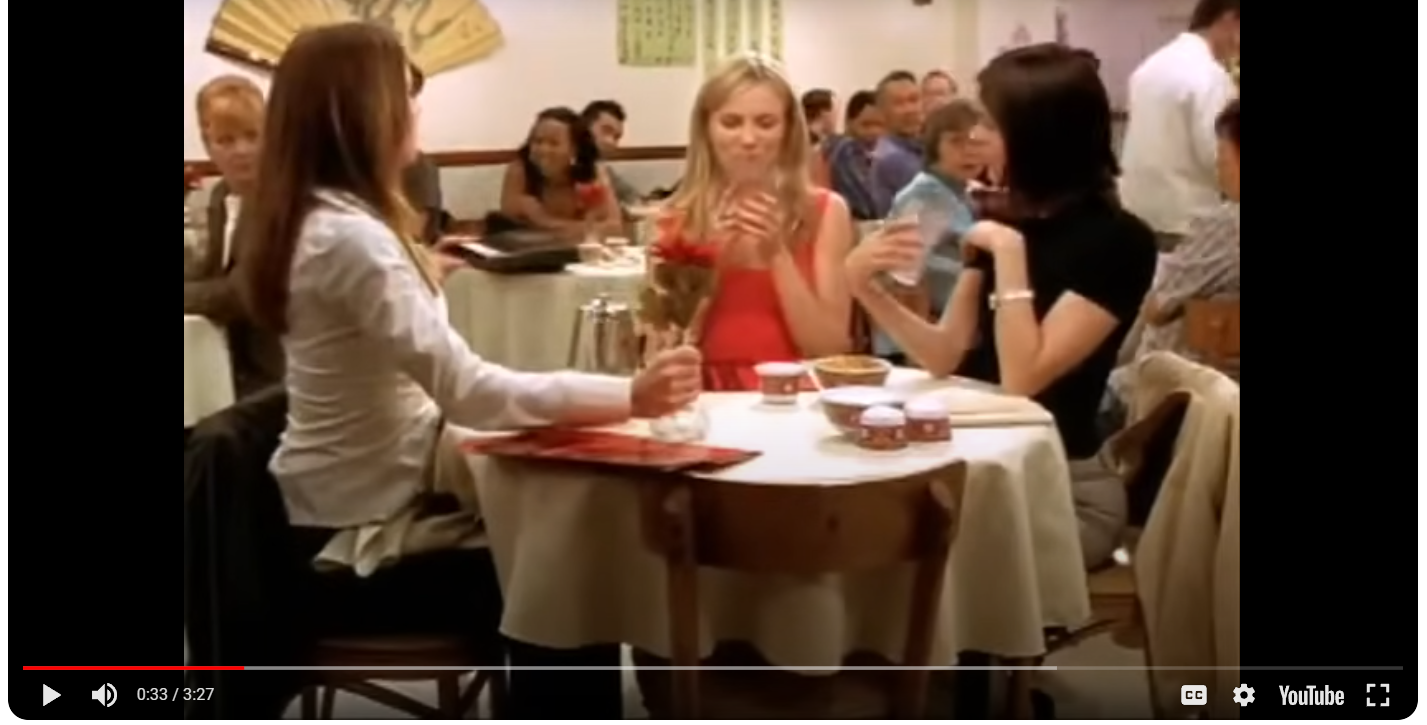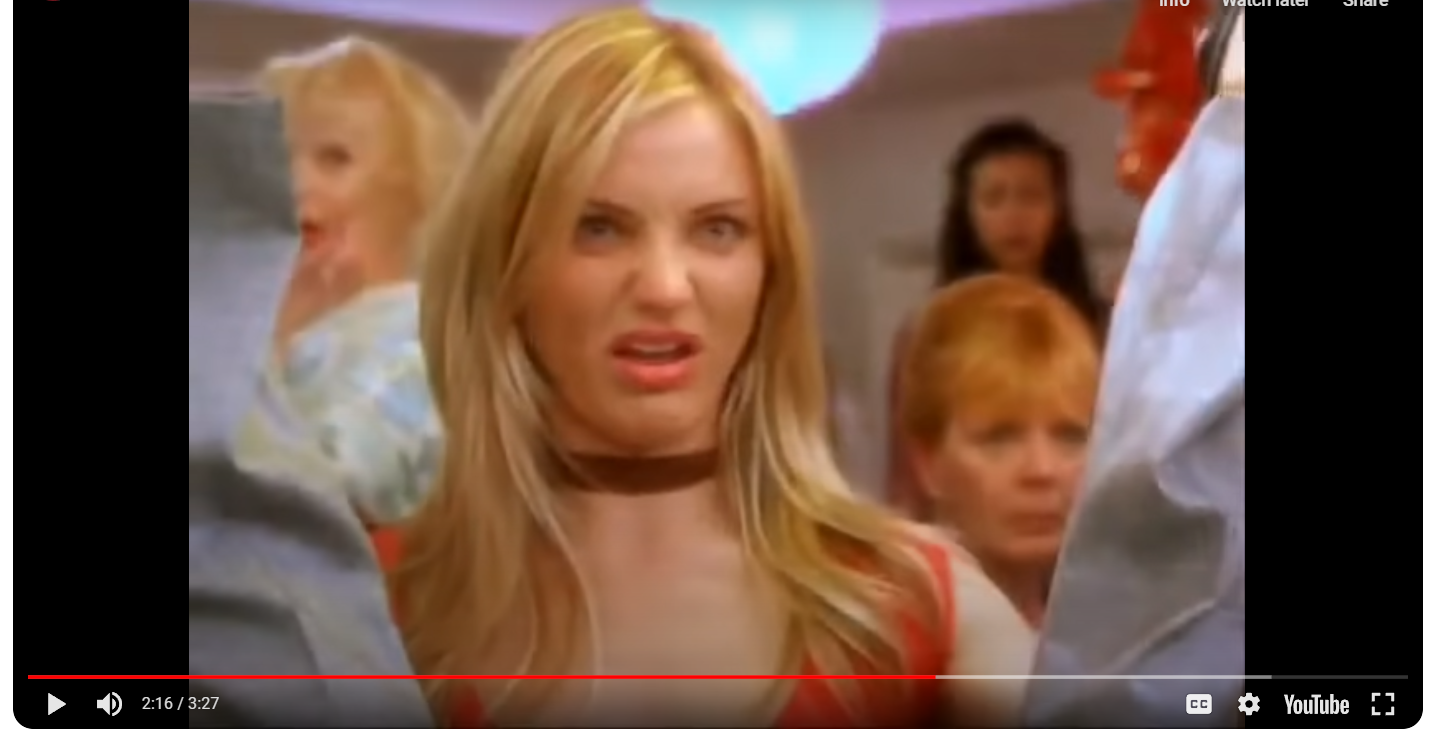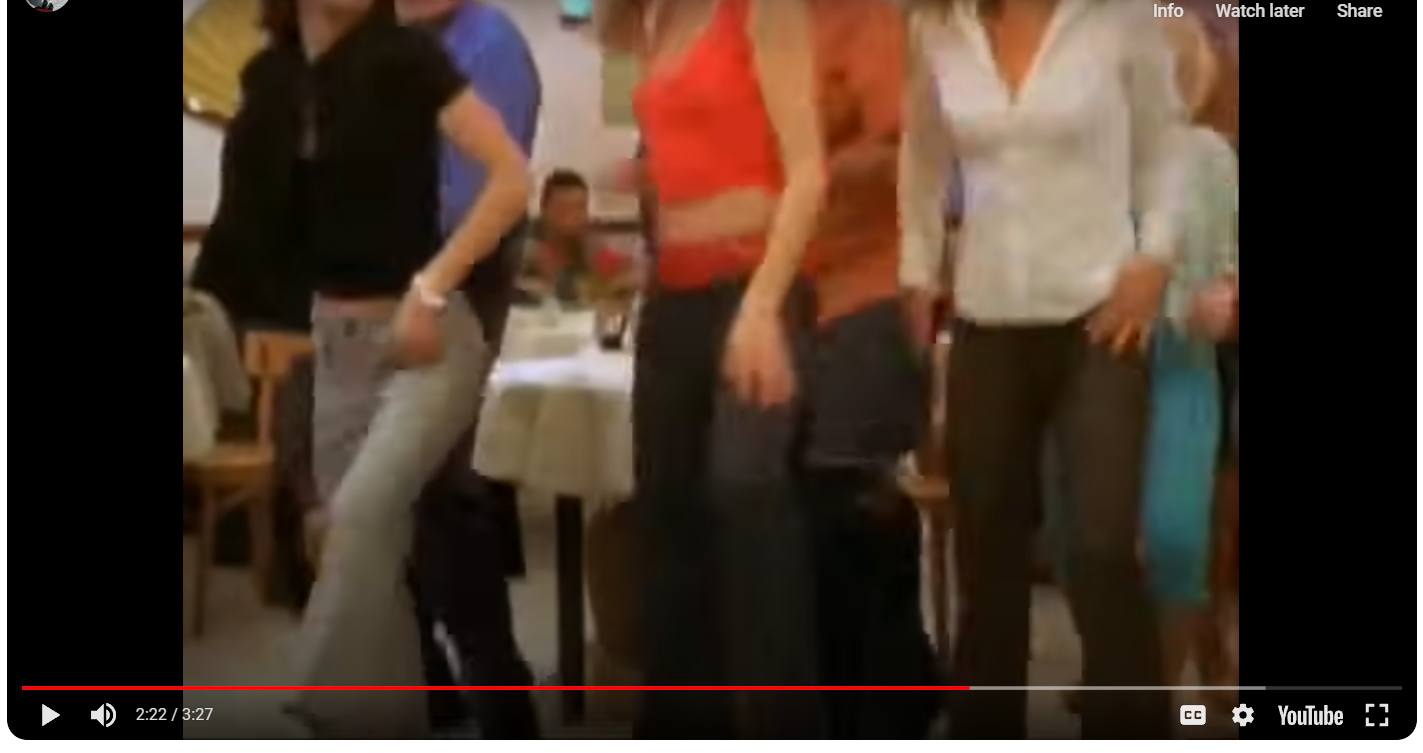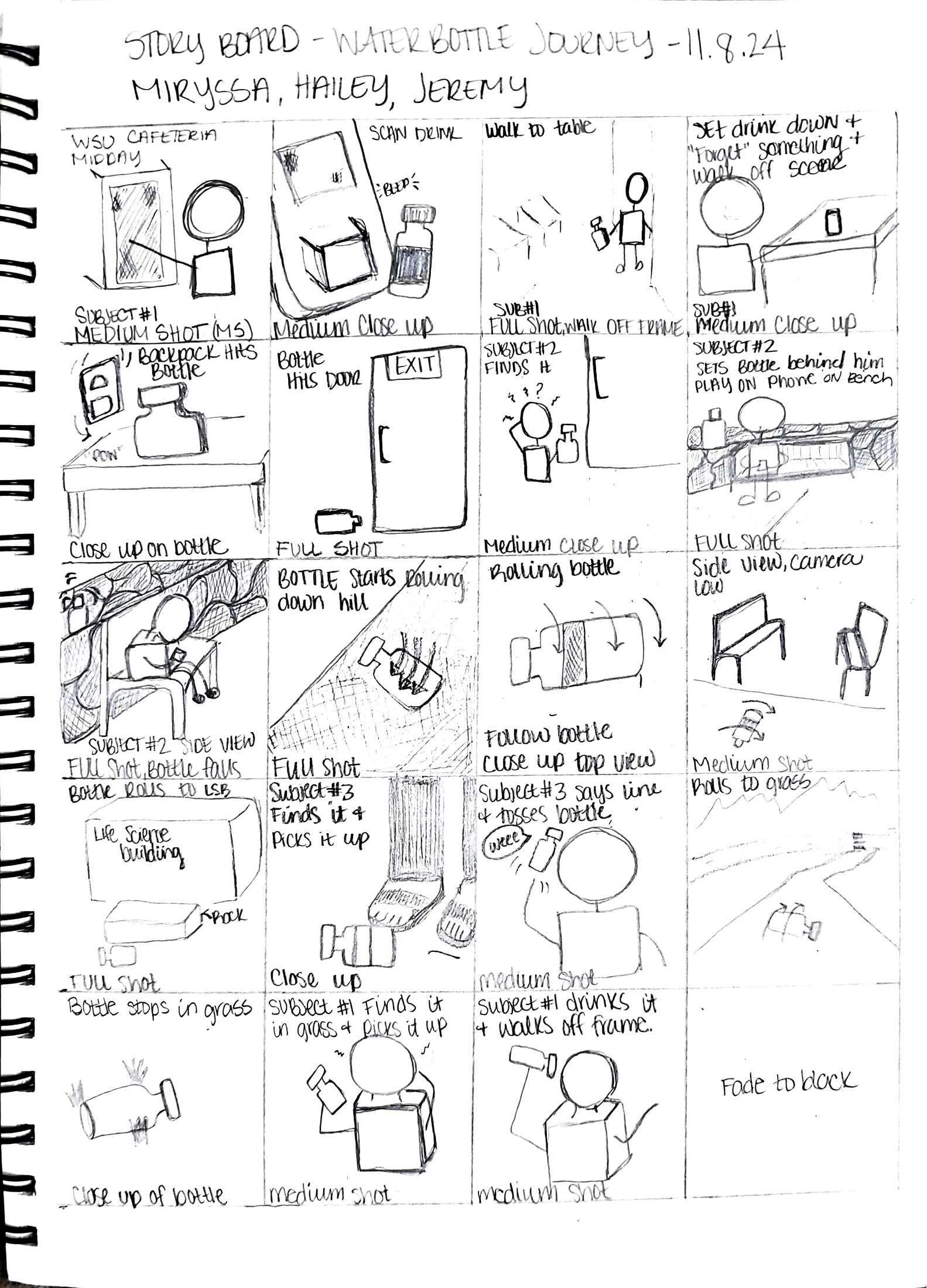Blog: Post these screen grabs in sequential order to the blog. Then for each image provide a description for the kind of shot (long shot, medium shot, close up, shaky, pan, etc) it is. Use Class Notes- Framing for reference. Discuss how the scene is held together as a narrative whole through the camera framing and editing.
Framing and shot types are important in storytelling because it helps the audience set the scene, portrays feelings, and establishes characters throughout the story. In the next few photos, we will be going over a variety of shots in a scene from the Sweetest thing, a 2002 romantic comedy, and explain why its important.

In the scene above, we have a medium close-up shot, capturing her hands up to her chest as she animatedly describes her date to her friends. The director uses this shot to emphasize her exaggerated expressions, highlighting her excitement and joy.

The next scene shows all three friends sitting around a table at the restaurant, enjoying lunch together. The setting provides the perfect backdrop for their gossip session. This helps the audience establish the setting/environment of the story.

If you haven’t seen this movie before, this scene unexpectedly breaks out into song and dance, as hinted by the chicken wings above. The director uses a medium long shot, with two of the friends in the foreground, shown from the knees up, while the third friend is in the background, being held as she playfully walks across a table. If this doesn’t scream fun then I don’t know what will.

The director uses a close-up shot here to emphasize the character’s reaction as she says ‘eww,’ while someone nearby is in the middle of a handstand. The entire restaurant pauses when she speaks, amplifying the impact of her statement.

Lastly, this is an interesting shot as it captures the full body but intentionally excludes the heads. The director focuses on highlighting a specific dance move that primarily involves the legs, which is why the camera avoids showing any faces.
View Post




